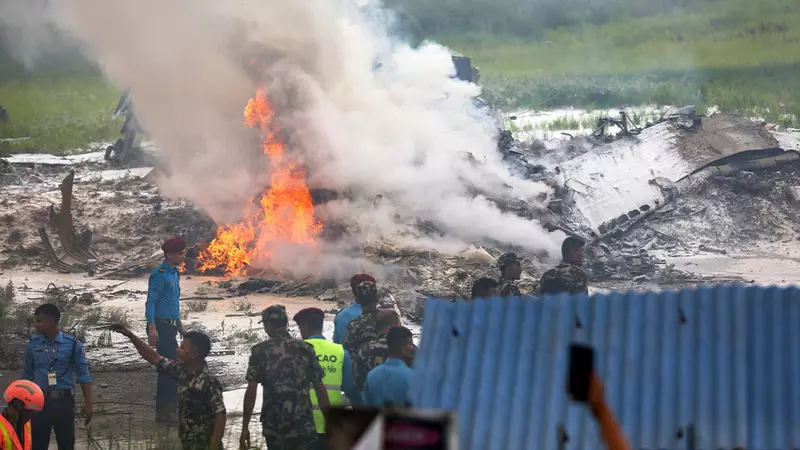In a chilling reminder of the perils associated with air travel in Nepal, a Saurya Airlines aircraft met with a tragic fate on Wednesday. The plane, which was carrying 18 Nepali nationals and a Yemeni citizen—all employees of the airline—crashed shortly after taking off from Kathmandu. Remarkably, the captain emerged as the sole survivor from this catastrophic event. Officials are still grappling to understand the sequence of events that led to the crash.
The ill-fated flight was en route to Pokhara, a destination that holds its own set of challenges for aviators due to its mountainous terrain. As the plane ascended from Kathmandu’s Tribhuvan International Airport, it veered off the runway to the right and ultimately crashed on the east side. Video footage captured the harrowing moments following the crash, depicting firefighters battling an inferno as thick black smoke spiraled into the sky. The Civil Aviation Authority of Nepal confirmed the crash in a statement, but specifics on the cause remain elusive.
Nepal’s treacherous airspace has long been a topic of concern. The country’s aviation sector is often criticized for its safety standards, and the challenging geography only amplifies the risks. Kathmandu’s airport, nestled in a valley and encircled by mountains, is notoriously difficult to navigate. The Aviation Safety Network emphasizes the Herculean task pilots face when attempting to land in airports surrounded by peaks, often cloaked in clouds. Tragically, this incident contributes to a grim tally of aviation fatalities in Nepal, where approximately 350 passengers have lost their lives since the year 2000.
The July 24, 2024 crash adds another chapter to Nepal’s troubled aviation history. The country has witnessed several air disasters over the decades, the deadliest of which occurred in 1992 when a Pakistan International Airlines Airbus crashed into a hillside, claiming 167 lives. These incidents serve as grim reminders of the inherent dangers of flying in one of the world’s most geographically challenging regions. While air travel remains a necessity for connecting remote areas, the frequency of such disasters underscores the urgent need for improved safety protocols.
As first responders sift through the wreckage in Kathmandu, the focus shifts to understanding the cause of this latest tragedy. Was it a mechanical failure, pilot error, or another factor that led to the plane’s demise? The answers are crucial not just for offering closure to the grieving families but also for preventing future occurrences. The survivors, notably the captain, will likely be pivotal in unraveling the mystery surrounding the crash.
The crash of the Saurya Airlines plane is a stark reminder that while aviation technology has advanced significantly, there are still elements beyond human control, especially in challenging terrains like Nepal. As the country mourns yet another aviation disaster, there is an urgent need for robust discussions on enhancing air travel safety, improving pilot training, and upgrading aviation infrastructure to prevent such tragedies in the future.




 By
By




 By
By
 By
By
 By
By







